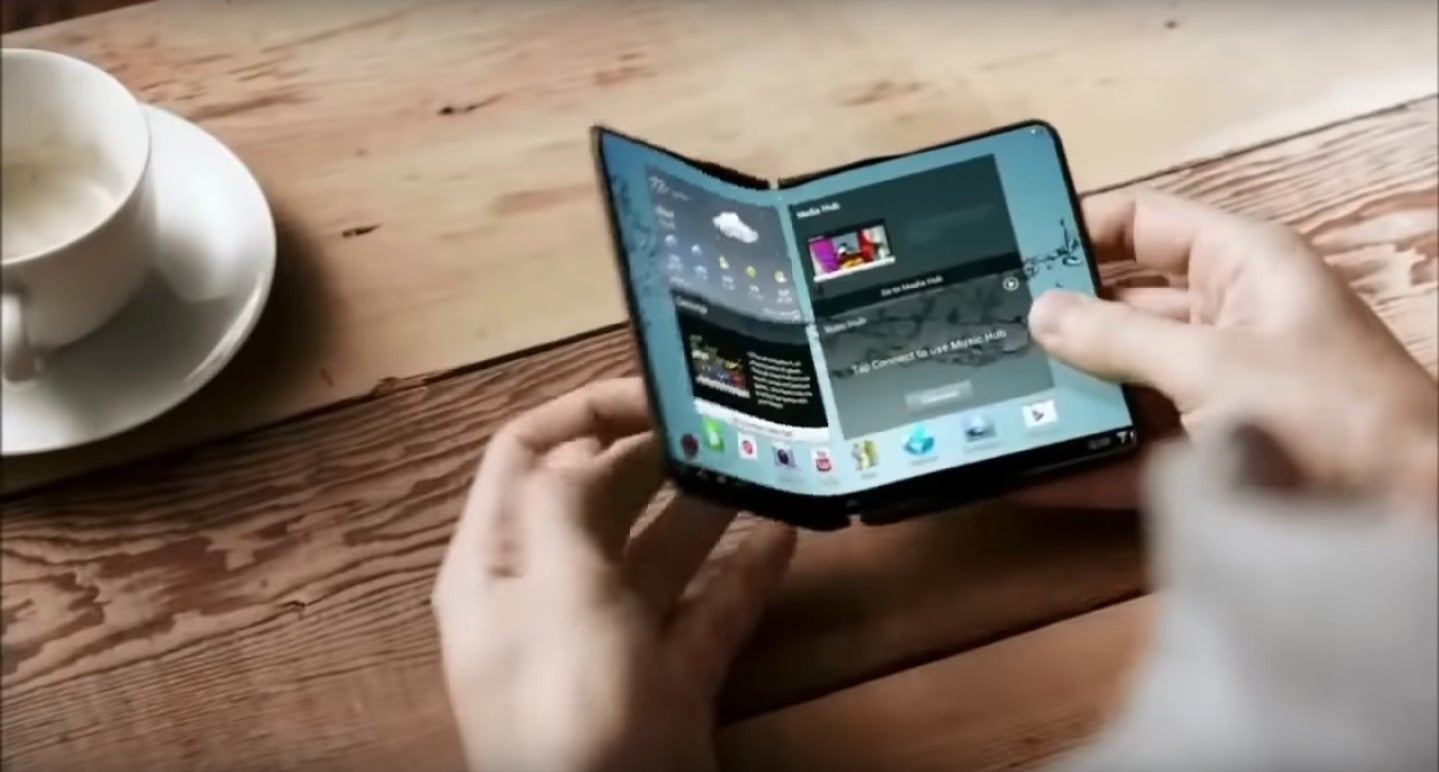
Just a few months ago at the wireless telecom industry’s largest trade show, MWC 2019, a new and exciting trend emerged: the foldable smartphone.
Samsung was supposed to be the first to introduce this hybrid device, called the Galaxy Fold, which begins as a phone and unfolds into a tablet with a big screen. But early reviewers of the phone have experienced various problems with the device’s display, prompting Samsung to delay the phone’s introduction indefinitely. What does this mean for the future of the foldable phone?
The foldable smartphone is poised to be the biggest revolution in wireless phone design, a refreshing change from the black slab that has been so prevalent for more than a decade. Samsung was expected to become the first to usher in that new revolution with the Galaxy Fold. But early reviewers found flaws in the device’s display, prompting Samsung to postpone its April 26 debut of the phone indefinitely until it can figure offer up workable solutions for the flaws.
The biggest question now is whether foldable phones are ready for primetime. The Fold was never designed to be a mass-market product, at least at the outset. But it had amassed a number of early adopters who were willing to pay nearly $2000 for the phone in advance of its April 26 debut. Interest was high.
Samsung’s foldable phone was intriguing. When folded, it was the shape of a standard smartphone but as thick as two smartphones stacked on top of each other. Unfolding the device unveiled a large and colourful display. And that’s where the flaws began.
The inside screen had a plastic film that appeared to be some sort of screen protector or a thin piece a plastic that is removed by the consumer once they take it out of the box. When this protective layer began to peel, users removed it. That’s when the display began to malfunction. Samsung did not tell reviewers to keep the piece of plastic in place.
How well do you really know your competitors?
Access the most comprehensive Company Profiles on the market, powered by GlobalData. Save hours of research. Gain competitive edge.

Thank you!
Your download email will arrive shortly
Not ready to buy yet? Download a free sample
We are confident about the unique quality of our Company Profiles. However, we want you to make the most beneficial decision for your business, so we offer a free sample that you can download by submitting the below form
By GlobalDataThis early failure won’t hurt Samsung’s overall dominance in the smartphone market. Folding phones are a new and expensive device that the market has yet to understand the value of. But the Galaxy Fold’s postponement could make a difficult climb for the folding phones segment overall. Samsung’s early failure has now garnered the attention of the mass market. If people were shaking their heads before over the steep price tag of such devices (Huawei will be coming to market with a USD 2600 foldable phone), they won’t want anything to do with such an expensive device that doesn’t appear to work reliably.
That means vendors with aspirations of bringing a foldable smartphone to market will have to work to do to convince users that their expensive investment will be meaningful. There are always risks in trying something new and innovative. Samsung needs to make some assurances to consumers.
It should advertise that it is prioritising the customer even if it means losing money to fine-tune its products. Since durability is a major issue for foldable phones, Samsung and the mobile operators that are selling these devices should offer enhanced device insurance and product warranty deals, especially for display and hinge repair, to make early adopters comfortable with their purchases.



